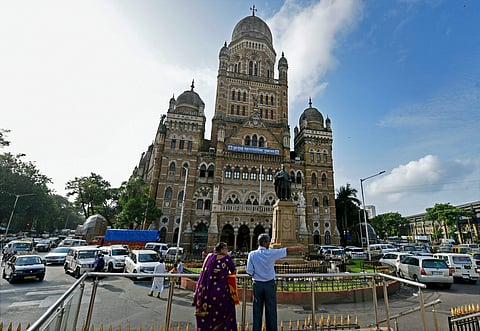

The lexicon defines a roundabout as that space or axis where a cluster of roads join in and traffic must go around. The theory is that this enables a smoother flow of movement. Those living in Delhi (and navigating the ‘gol chakkars’) will attest that frequently, motion is mistaken for movement. In a sense roundabouts are an apt metaphor for the random layers and gaps afflicting public policy design. The promise of ease of living is delayed, and even detained at the intersection of multiple and often pious objectives.
Like on Friday the residents of Mumbai learnt that a vital arterial road bridge connecting the eastern and western parts of Andheri may not be ready in June 2023. The nodal Gopal Krishna Gokhale Bridge had collapsed in July 2018. After four years of to-ing and fro-ing between the Brihanmumbai Municipal Corporation and the Indian Railways, following serious strictures by the CAG, the authorities promised that work would be expedited and at least a part of the bridge would be opened by June 2023. It now turns out that the bridge will not be ready before the monsoon, worsening the woes of commuters.
Like, the reason for the new delay is worth attention: the unavailability of steel girders due to a strike at the factory contracted to fabricate them. This in a country where crude steel output this year touched 124 million tonnes! Last year the BMC floated tenders for concreting 400 km of city roads and this week the BMC issued a notice to the contractor for failing to start work. Clearly agility necessary to address citizens' woes to address citizens’ woes is afflicted by both sloth and flexibility in policy. One wonders if the initiative of PM Gati Shakti – the National Master Plan for Multi-modal Connectivity has a mechanism to bridge the gaps in policy faultlines.
Like the promise of the bridge is just one of the many projects afflicted by the culture of roundabouts in public policy. It is true that the platform of PM Gati Shakti has enabled better planning of infrastructure projects. But there is no mistaking the gap in implementation and accountability. In February 2023 the Ministry of Statistics and Programme Implementation published a review of projects worth over Rs 150 crore. The details are revealing. Of the 1418 projects 823 projects are delayed, 346 projects have cost overruns and 316 projects have reported “inadequate information” about commissioning schedule. The gap between estimated and now anticipated cost: Rs 4.46 lakh crore. For context consider this: the gap between estimated and anticipated cost is more than twice the total allocation for food subsidy for 2023-24.
Like, the adoption of Aadhaar-based identification has been celebrated globally as a mechanism for delivery of welfare, issue of documents and access to banking/telecom services. The use of biometric authentication enabled the triangulation of ease of governance, ease of business and ease of living. Sometime during the pandemic a new guideline was introduced by the TRAI – telecom operators issuing a new connection, post Aadhaar based biometric authentication, are required to “live photograph” the customer with date and time stamp. The rationale for the live photograph presumes inadequacies in biometric identification and its objectives are mystifying to say the least.
Like earlier this week the Mumbai High Court was seized with what has been described as a genuine problem of residential areas littered with vehicles seized by the police. The challenge is the absence of a policy. Justices Girish Kulkarni and R N Laddha asked the government to “place on record any policy” for dealing with seized vehicles “causing public nuisance by their haphazard storage”. Now this brings into focus the intent to scrap vehicles older than 15 years. How effective is the policy and systems for disposing these vehicles – just the union government plans to scrap over 1.28 lakh vehicles!
Like the state of education depends on physical and human infrastructure. The students – who have lost out due to the pandemic – require enhanced attention from teachers. And this is challenged by systemic inefficiencies and apathy. A report by the Standing Committee on the Ministry of Education reveals that, as of December 2022, over 9.86 lakh teacher posts are lying vacant across the country. The largest gap concerns the most vulnerable --over 7.47 lakh teacher posts are vacant in primary schools. Vacant teacher posts are a persistent phenomenon. In 2021-22 over 12.54 lakh posts for teachers were vacant. Lack of teachers translates into serious implications for the quality of workforce India will need.
Finally, the phenomenon of phone call and message scams is now verily an epidemic. The perpetrators of the scam are coming up with new ways of “vishing” with threats to vital utilities ranging from bank accounts to phone connections to electricity supply. Those who pick up the call and are skeptical face a barrage of threats and abuse and the innocent are scammed. The TRAI issues periodic warnings and has format for complaints. But criminal gangs are operating with impunity. The situation calls for exemplary prosecution and it may help if the TRAI shares the number of complaints and details of criminals nabbed.
India’s aspiration to a digitalized $ 10 trillion economy demands better policy design and implementation.